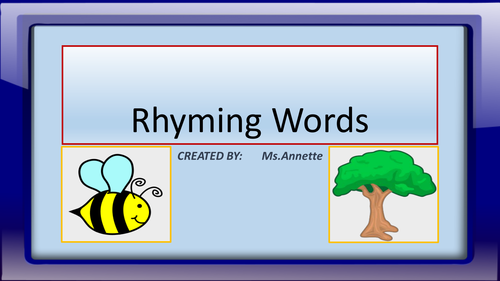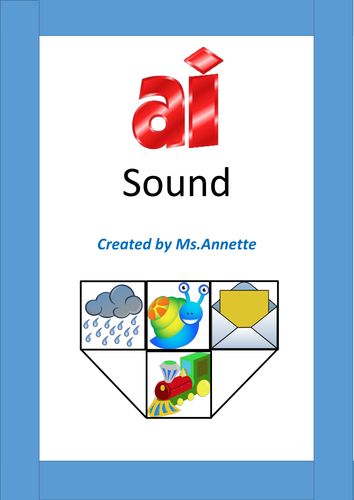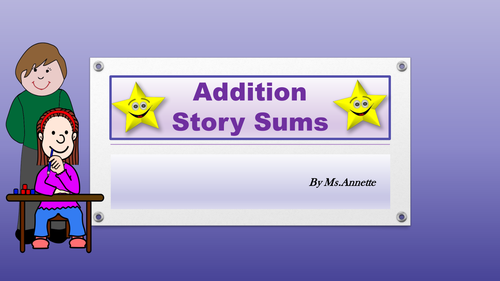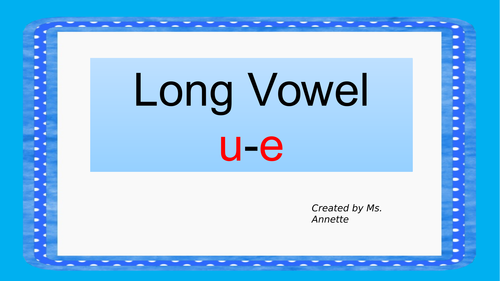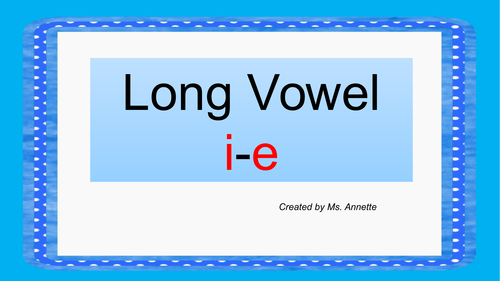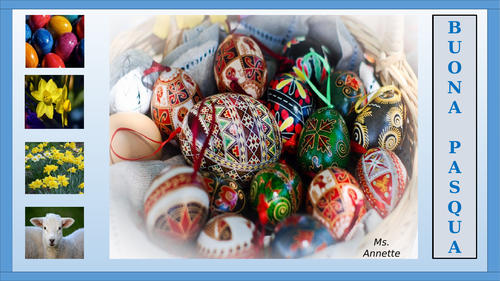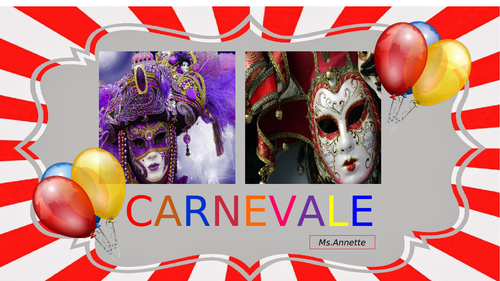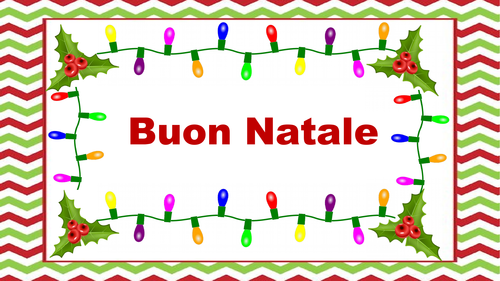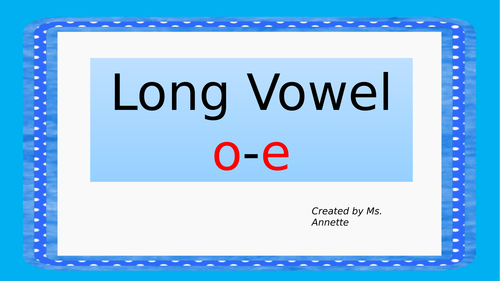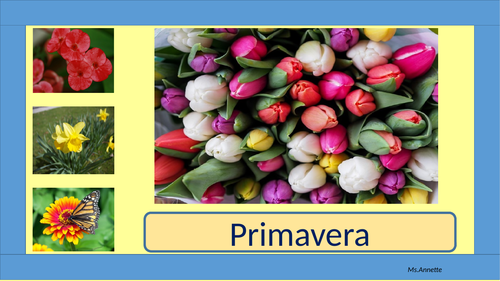
36Uploads
17k+Views
4k+Downloads
All resources
Sale

Rhyming Words
This power point is useful if the teacher is working on developing phonological awareness. It includes a set of 10 slides. In each slide there are 3 pictures. There are no words shown. The teacher says the three words and the students have to find the two rhyming pictures. The one which does not rhyme will fade away.
Sale

ai sound
In this resource pack you will find an activity for every student. The activities are graded. There are easy ones and more challenging activities to do.
Tasks in this resource pack.
1. Flash Cards. Students match the words to the pictures.
2. Bingo Game.
3. Flash Cards. Students match the sentences to the pictures.
4. A handout. Students have words to read and a fill in exercise. They have to write the words to match the pictures.
5. Two Comprehensions. Both comprehensions have the same text. The first comprehension is easier as students have to choose the correct answer. The second comprehension is more challenging as students have to answer the questions asked.
Sale

Addition Story Sums
This PowerPoint Presentation is ideal for students who are starting learning addition story sums for the first time. In this resource, unit numbers are used. There is a total of 15 slides. Each story sum is described in three slides. In the first slide there is the story sum to read. In the second slide there is the picture describing the story sum read. Students can see things being added in the picture every time the teacher clicks. This helps students to understand addition. In the third slide the sum is shown.
Sale

Long Vowel u-e
1. This Power Point is about the long vowel sound u-e. There is a presentation of 12 slides. The word is shown first so that students can read the word without the help of pictures. When the students read the word, the teacher can click so that the picture appears next to the word.
2. In this pdf you can find various worksheets.
Read the words. Give this handout to your students to learn how to read words with the long vowel sound u-e. You can also laminate this worksheet, cut the words and draw the words like in a bingo game. Read the word drawn and students will write the word on their white boards. It is another way how you can do a spelling game in class.
Match the pictures to the words. Students can be given this worksheet to match the pictures to the words. The teacher can also laminate it, cut the pictures and the words and the students have to match the words to the pictures.
Write the word. Students have to read the sentence and then they have to write the word that matches to the picture shown.
Sale

Long Vowel i-e
1. The Power Point exposes students to the long vowel sound i-e. First there is a presentation of 24 slides which show words with this vowel sound. The word is shown first so that students can say the word without the help of pictures. Then the picture appears. In the last four slides there is a short story to read.
2. The pdf includes various worksheets.
Read the words. Give this handout to your students to learn how to read the words with the long vowel sound i-e. You can also laminate this worksheet, cut the words and draw the words like in a bingo game. Read the word drawn and the students write it on their white boards. It is another way how you can do a spelling game in class.
Match the pictures to the words. Students can be given this worksheet to match the pictures to the words. The teacher can also laminate it, cut the pictures and the words and the students have to match the words to the pictures.
Write the word. Students have to read the sentence and then they have to write the word that matches to the picture shown.
Sale

Pasqua
PowerPoint: The PowerPoint consists of 19 Slides. In each slide, the students can see the picture first so that they can say the word. Then when the teacher clicks, the word appears.
PDF: The second resource consists of various activities.
1. Cut and laminate the pictures with words. You can use these to help your students learn the words about easter or you can cut the pictures and words and the students have to match them.
2. Write the words to match the pictures.
3. Bingo Game. (There are 6 Bingo Sheets and Pictures to draw).
4. Write a sentence about the words given.
Sale

Before and After
In this powerpoint there are 28 slides in all. The first 7 slides help the children to learn the concept of before and after by means of pictures. For example: Which animal is after the cat? They have to choose the right animal and then a tick appears on the picture. The next 8 slides focus on the days of the week. Students have to think about what day comes before and after the day mentioned in the question. In the last 11 slides students have to say the numbers that come before and after the number given. The numbers used are two digit numbers.
Sale

Carnevale
PowerPoint: This PowerPoint is about how Carnival is celebrated in Italy. It has 14 slides in all. This resource helps students to learn new words related to Carnival. In each slide there is a picture and when you click the word appears.
PDF: In this PDF there are various worksheets.
Worksheet 1. You can use this resource in two ways; Learn the words or Laminate the worksheets and cut the words and the pictures. Students have to match the words to the pictures.
Worksheet 2. Write the words to match the pictures.
Worksheet 3. Write a few sentences to describe the clown.
Sale

Choose the smallest and largest number.
The three Power Points presented help children to learn to identify between the smallest and largest numbers by means of pictorial images. The rest of the slides lead children to compare numbers without pictorial images and more abstract thinking is involved. A number line is presented in all slides. Three Handouts are also included so children can think and select the smallest and largest numbers.
Power Point – To help students identify the smallest number. In the first slides, there are only pictures to compare (Which picture is the smallest and which one is the largest). In the next slides, children are helped to compare numbers by visualizing the value of each number presented by means of pictures. There is also a number line to help children compare numbers. In the last slides there are only numbers and a number line and children have to select the smallest number. Numbers used from 1 to 10.
Power Point - To help students identify the largest number. In the first slides, there are only pictures to compare (Which picture is the smallest and which one is the largest). In the next slides, children are helped to compare numbers by visualizing the value of each number presented by means of pictures. There is also a number line to help children compare numbers. In the last slides there are only numbers and a number line and children have to select the largest number. Numbers used from 1 to 10.
Power Point – In this Power Point there are only numbers to compare and a number line to help students compare better. Children are sometimes asked to select the largest number and sometimes they are asked to choose the smallest number. Numbers used from 1 to 20.
Handout 1 - Colour the largest number (Numbers used from 1 to 10)
Handout 2 – Colour the smallest number (Numbers used from 1 to 12)
Handout 3 – Colour the smallest number green and the largest number yellow (Numbers used from 1 to 20)
Sale

/igh/ Sound
This resource will help students learn how to read and write words having the /igh/ sound. This resource includes four different tasks. In the first task there is a set of flashcards. The teacher can use these flashcards to teach students how the read words having the /igh/ sound. Students can also match the words to pictures. The second task includes a bingo game. There are pictures to draw and 5 sets of /igh/ words. In the third task, there are four pictures. Students have to write a story about the pictures shown. The fourth task includes a handout to print. Students have to fill in the blanks to complete the sentences. The words to choose from are all /igh/ words.
Sale

Parole del Natale
This resource includes:
1. A power point with Christmas vocabulary. There are 27 slides in all. First the picture appears and then the word is shown.
2. A PDF. In this PDF there are flashcards. Pictures and words can be matched to consolidate the new words learned.
3. A PDF. In this worksheet students have to complete the word to match the picture. This will help them to remember the words learned and to learn how to write the words correctly.
Sale

Long vowel o-e
1. The Power Point exposes students to the long vowel sound o-e. First there is a presentation of 22 slides which show words with this vowel sound. The word is shown first so that students can say the word without the help of pictures. Then the picture appears. In the last two slides there is a short story to read.
2. This pdf includes various worksheets.
Read the words. Give this handout to your students to learn how to read the words with the long vowel sound o-e. You can also laminate this worksheet, cut the words and draw the words like in a bingo game. Read the word drawn and the students write it on their white boards. It is another way how you can do a spelling game in class.
Match the pictures to the words. Students can be given this worksheet to match the pictures to the words. The teacher can also laminate it, cut the pictures and the words and the students have to match the words to the pictures.
Write the word. Students have to read the sentence and then they have to write the word that matches to the picture shown.
Sale

Frutta - Primissime Parole
This resource includes:
A power point with Names of Fruit to learn in Italian. There are 30 slides in all. Thus students will learn 30 different words. First the picture appears and then the word is shown.
A PDF. In this PDF there are 30 fruit pictures and 30 words to cut and match. This can be used as a game to help your students memorise fruit names.
Sale

Take Away story sums
This is a PowerPoint to help children understand by visualizing the take away concept (Take away one, two, three and four). When you click objects disappear from the slide so that children will understand better this concept. Each story problem is presented in 3 slides. In the first slide there is the story problem written, in the second slide there is a pictorial representation of the story problem, and in the third slide there is the take away sum. There are 6 subtraction story problems in all.
Sale

Primavera
This powerpoint is about spring. It has 22 slides. The objective is to help students learn new vocabulary in Italian about spring. First the picture is shown so that students can say the word if they know it. When the teacher clicks, the word appears.
In the pdf, there are various resources. The first resource consolidates what the students learned in the powerpoint. Use this resource as a handout or laminate the cards, cut them and the students have to match the pictures to the words. In the second resource, students have to write the word next to the picture shown. In the third resource, students have to write the singular or plural of the words given. The last resource is a composition about spring. Helping words are given to help students write their composition.

